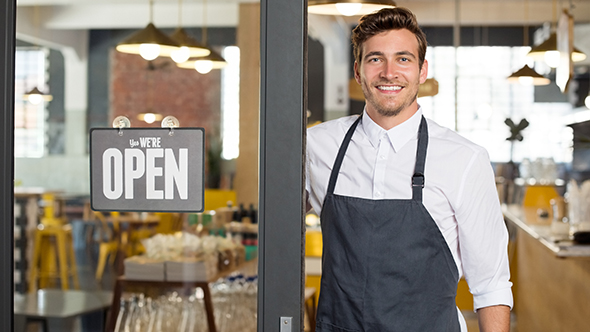2021 is a time to embrace change and re-commit yourself to your business.
2020 was “the worst year in history for the United States restaurant industry,” Hudson Riehle is the senior vice president for the National Restaurant Association. His firm tracks trends and changes in the restaurant industry, “Of all the industries in America, the restaurant industry was the most impacted in terms of employment and sales decline.”
In fact, the industry lost an estimated $240 billion in sales when compared to 2019, that’s a 19.2% decline. And some 2 million restaurant workers still remain out of work. So while we’re on the road to recovery, it’s going to take time to reach the finish line.
Rebuilding, After a Gap Year
For many independent restaurateurs, who are still depending on government grants and business aide, it’s going to be a very tough road ahead. These establishments don’t have massive brands or investors behind them, as they come out of the pandemic, they now have to worry about repaying debt, planning for inflation, and signs of food and water shortages.
Warmer temperatures mean more people are getting out to eat, and even though people getting vaccinated – including restaurant workers – for many restaurants, it’s still tough going.
There’s also some stigma around restaurants – from treatment and compensation of hourly wage employees to eating indoors – which is keeping customers (and potential employees) at bay. These issues are adding to the crisis, which, sadly, is going to stick around probably until mid 2022.
Recent research shows that 75% of people will continue to use curbside pickup, while 31% were less willing to use communal seating.
Off-Premise Options are On Fire
Pre-pandemic, takeout, curbside pickup and delivery accounted for 60% of all restaurant traffic. During the pandemic it surged to 90%.
Contactless delivery and better, more integrated POS systems have made it easier for customers and establishments to conduct business. And even though less than 5% of operators have added delivery from a virtual kitchen since the beginning of the pandemic, ghost, virtual, cloud or whatever kitchens we’re calling them this week, are also here to stay.
Warmer temps and summer weather usually drive people outdoors. Thankfully, in most areas, those parklets and outdoor dining additions are also going to be sticking around a little bit longer.
Automated Solutions and Smaller Staffs
Technology is helping restaurants become more profitable and efficient. Companies like Automat Kitchen are bringing back the Automats of the early 1900’s with a twist: Instead of a pre-made sandwich bought with a nickel from a vending machine, customers order online from a wide selection, then pick up their food from a food locker inside the restaurant.
Restaurants are facing a hiring challenge too, so smaller staffs and more flexible team members that can handle multiple duties will help shape what restaurant staffing looks like in the future.
The customer service experience will not change: It will still be focused on quality service and customer convenience, but the footprint of the restaurant will be better blended and customized with the digital and mobile components.
Reflecting on Change
The pandemic gave many owners and operators a chance to seriously reflect on their business. Maybe you’re still reflecting, and wondering how to make your restaurant thrive in a post-pandemic world? It’s time to re-commit yourself to your business, embrace the changes and use them to your advantage.
Share this

